8 Japandi Kitchen Ideas for a Calm and Minimal Cooking Space
If you’re looking to transform your kitchen into a harmonious blend of East and West, here are 8 inspiring ideas to guide your Japandi kitchen design.
1. Embrace Minimalist Cabinetry and Open Shelving
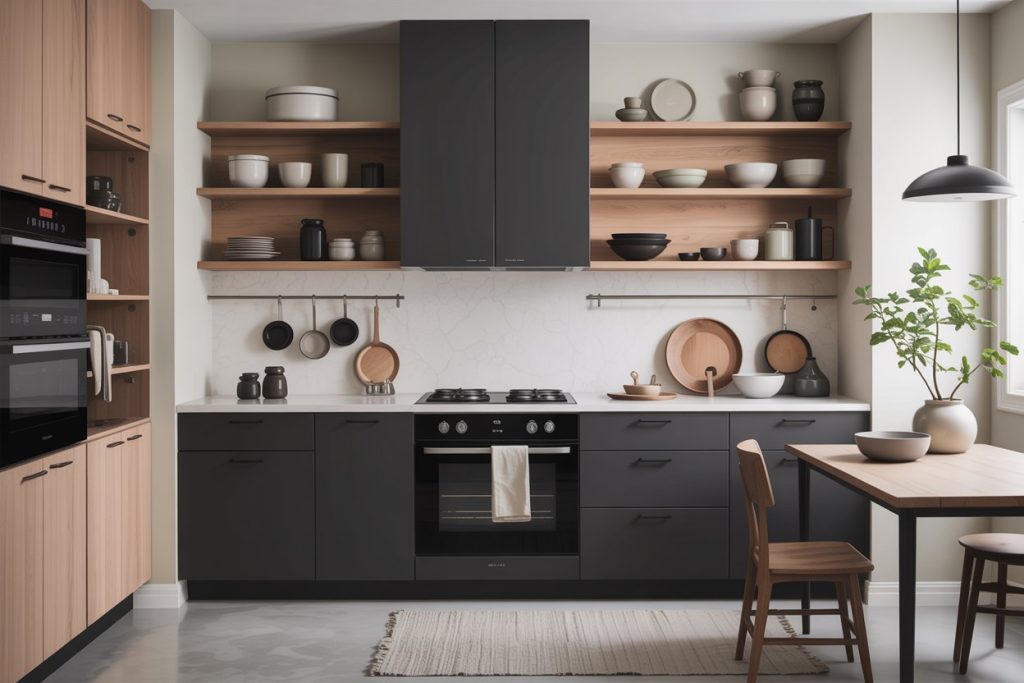
At the core of Japandi design is minimalism. Think clean, handle-less cabinetry in matte finishes—natural woods like oak or ash paired with sleek black accents. Open shelving also plays a big role, Japandi kitchen ideas helping to keep the space airy while showcasing curated items like handmade ceramics or wooden bowls.
You can get even more inspiration for simplifying your kitchen storage from these open kitchen shelves ideas.
Tips:
- Choose flat-front cabinets in light wood or matte black.
- Use open shelves to display minimalist tableware.
- Keep clutter to a minimum with hidden storage solutions.
2. Natural Materials and Organic Textures
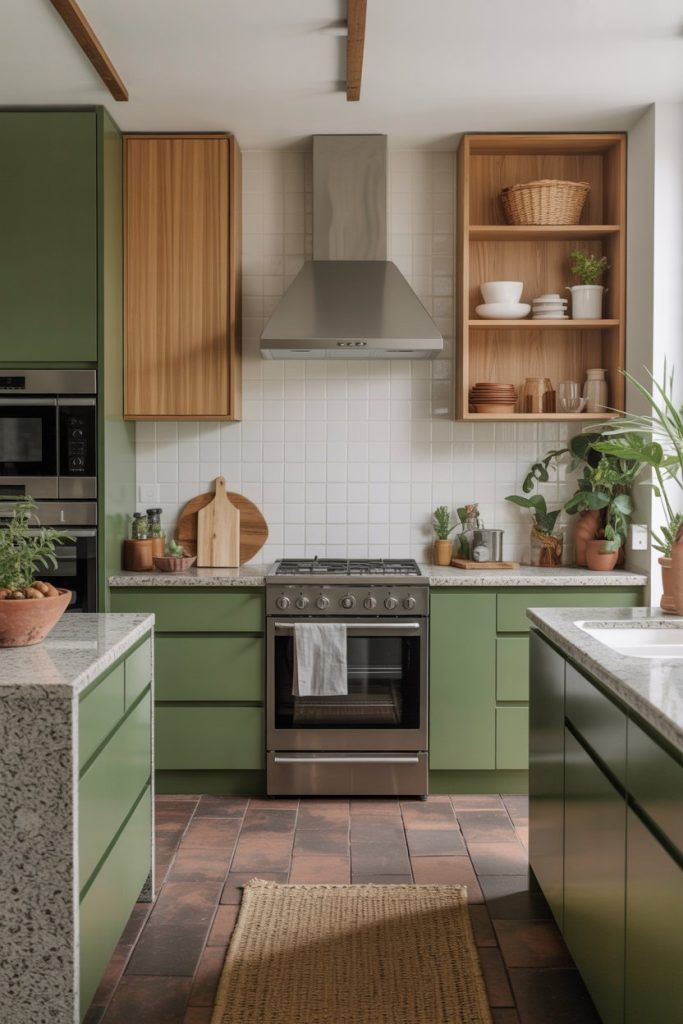
Japandi kitchens celebrate nature by incorporating raw, organic materials. Consider stone countertops, wood cabinetry, linen textiles, and woven baskets. These natural textures add warmth to the minimal design and create a space that feels grounded and inviting.
For broader inspiration on balancing rustic charm and contemporary lines, see these rustic home decor ideas.
Design Tips:
- Opt for stone or concrete countertops.
- Include wood elements with subtle grain patterns.
- Add woven light fixtures or bamboo accessories for texture.
3. Muted, Neutral, and Earthy Color Palettes
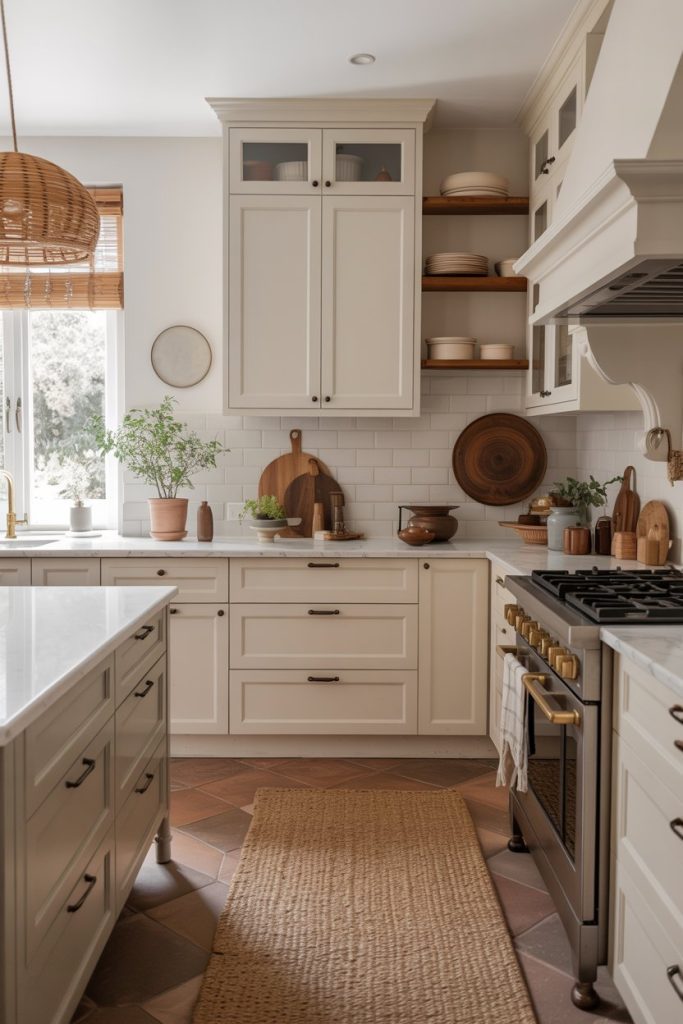
A key feature in Japandi style kitchen ideas is a muted, earthy palette. Instead of stark white, think warm beiges, soft greys, sage greens, and natural browns. These colors promote a calm, welcoming atmosphere, perfect for mindful cooking and entertaining.
For ideas on crafting an earthy palette in other rooms, explore these neutral home decor ideas.
Tips:
- Paint walls in calming neutrals or pale greens.
- Balance light and dark tones for visual depth.
- Use matte finishes to avoid glare and harsh reflections.
4. Functional, Thoughtful Layouts
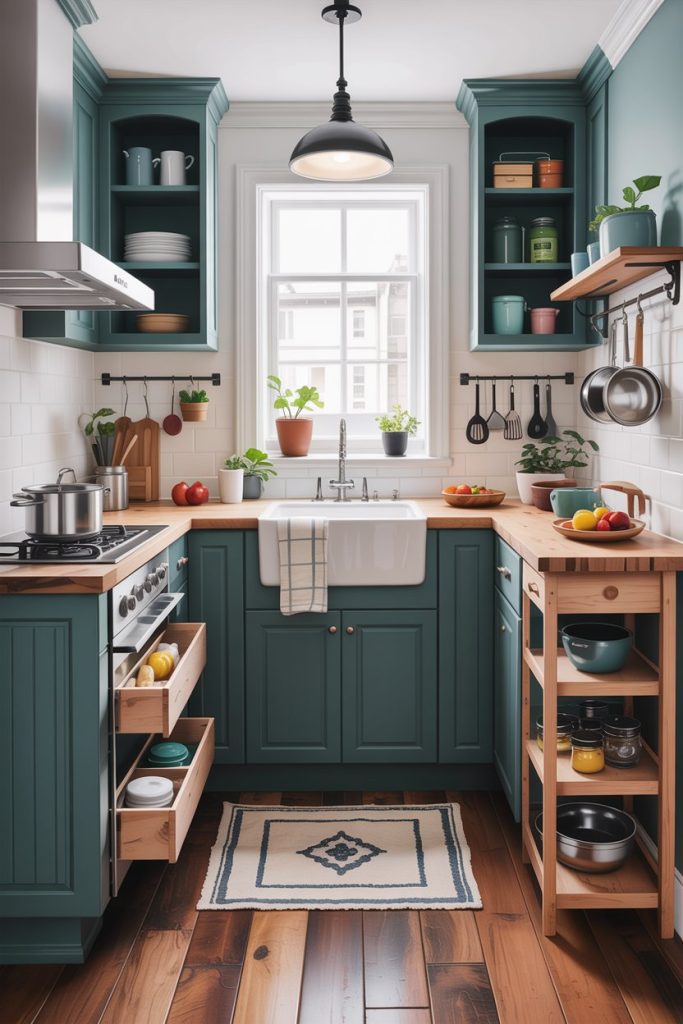
Japandi kitchens emphasize functionality. Every element should serve a purpose and have its place. This means optimizing layout for workflow, integrating efficient storage solutions, and avoiding unnecessary ornamentation.
If you love smart, space-conscious layouts, check out these kitchen set minimalist ideas for more guidance.
Layout Ideas:
- Use an efficient triangle setup (sink, stove, refrigerator).
- Install drawer organizers to keep utensils tidy.
- Incorporate deep drawers for pots and pans.
5. Warm, Ambient Lighting
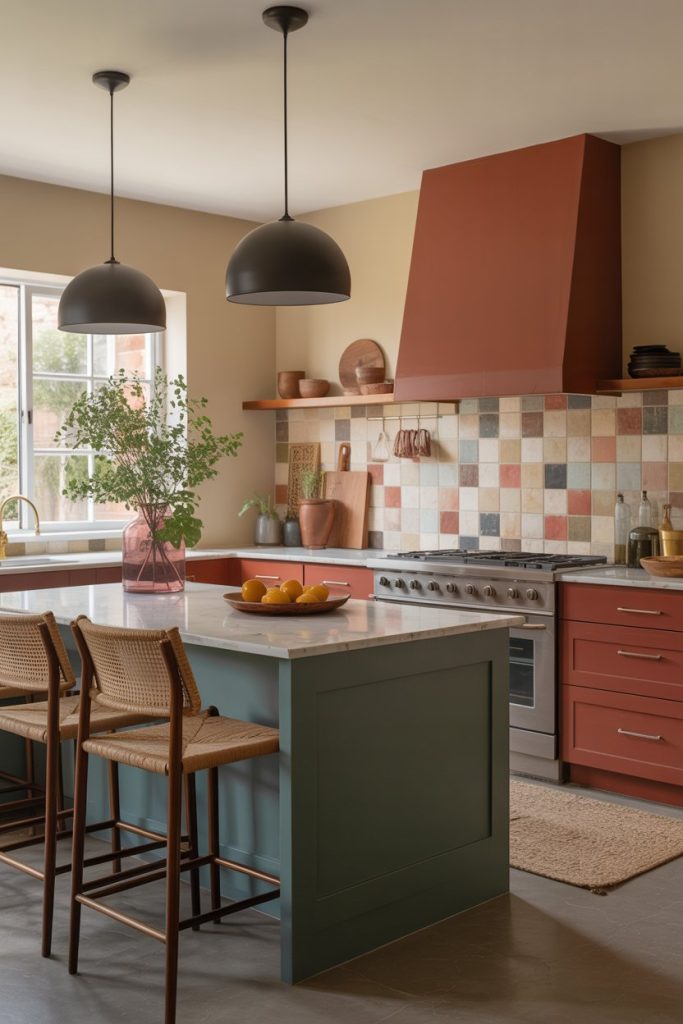
Lighting plays a crucial role in achieving the Japandi aesthetic. Instead of harsh overheads, choose layered lighting—pendants over islands, under-cabinet LED strips, and warm-toned bulbs that cast a soft, inviting glow.
For more inspiration on choosing the right lighting, see these interior design living room ideas where lighting is also used to create mood and atmosphere.
Tips:
- Pick natural materials like rattan or paper for lampshades.
- Use dimmable lights for flexibility.
- Layer ambient, task, and accent lighting.
6. Statement Islands and Dining Spaces
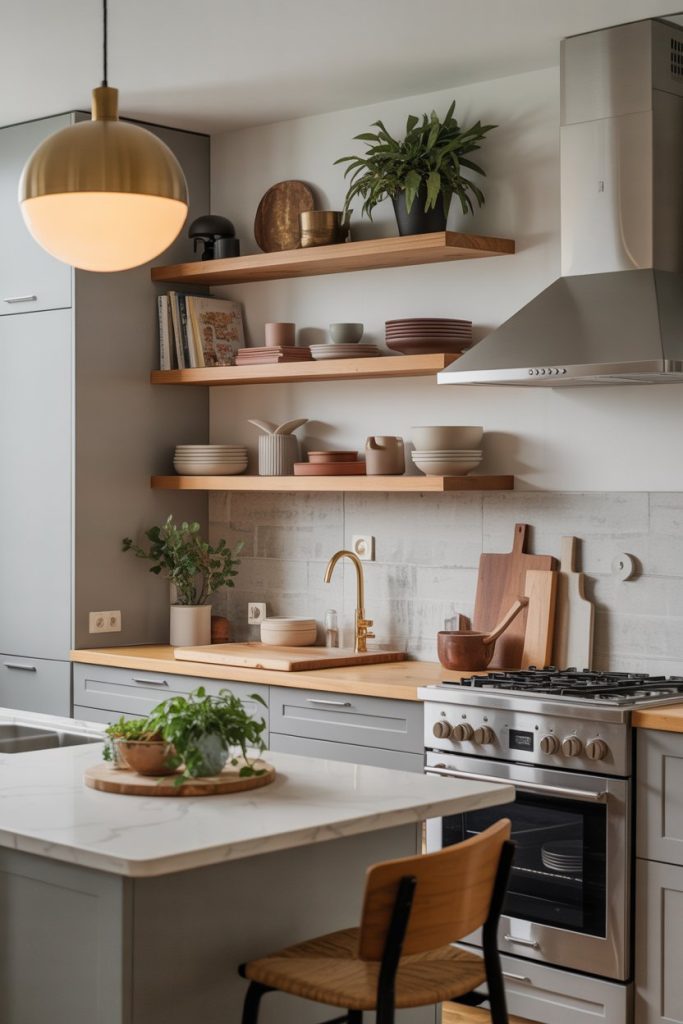
A Japandi kitchen often includes a simple but striking island or dining area that acts as a social hub. Use natural wood, stone, or muted cabinetry, and pair with minimalist stools or benches for an inviting space to gather.
For those working with limited square footage, take ideas from these how to design small studio apartments—many of the principles of flexibility and smart use of space apply.
Ideas:
- Use a slim-profile island for smaller kitchens.
- Opt for a raw-edge wood countertop for organic appeal.
- Include built-in storage to reduce clutter.
7. Subtle Decorative Accents
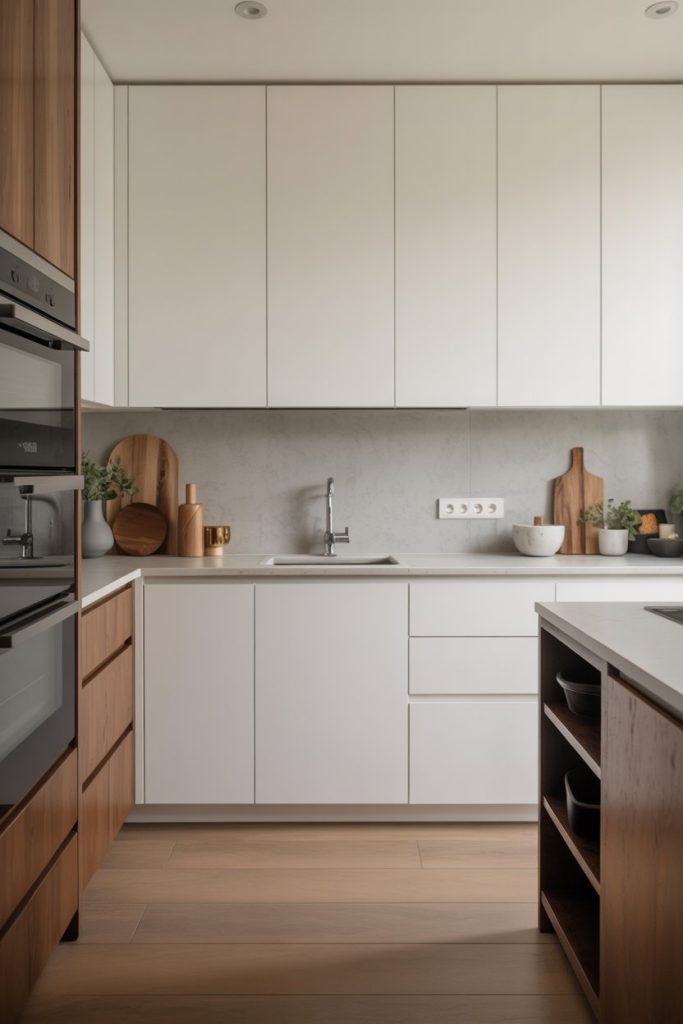
While Japandi design avoids clutter, it welcomes carefully chosen decor to add personality. Think handcrafted ceramics, minimalist art, woven textiles, or indoor plants that echo nature without overwhelming the space.
If you’re looking to carry this aesthetic throughout your home, these minimalist living room ideas offer great guidance.
Decor Tips:
- Limit decor to a few meaningful pieces.
- Choose functional decor (e.g., beautiful storage jars).
- Incorporate greenery with low-maintenance indoor plants.
8. Sustainability at Its Core
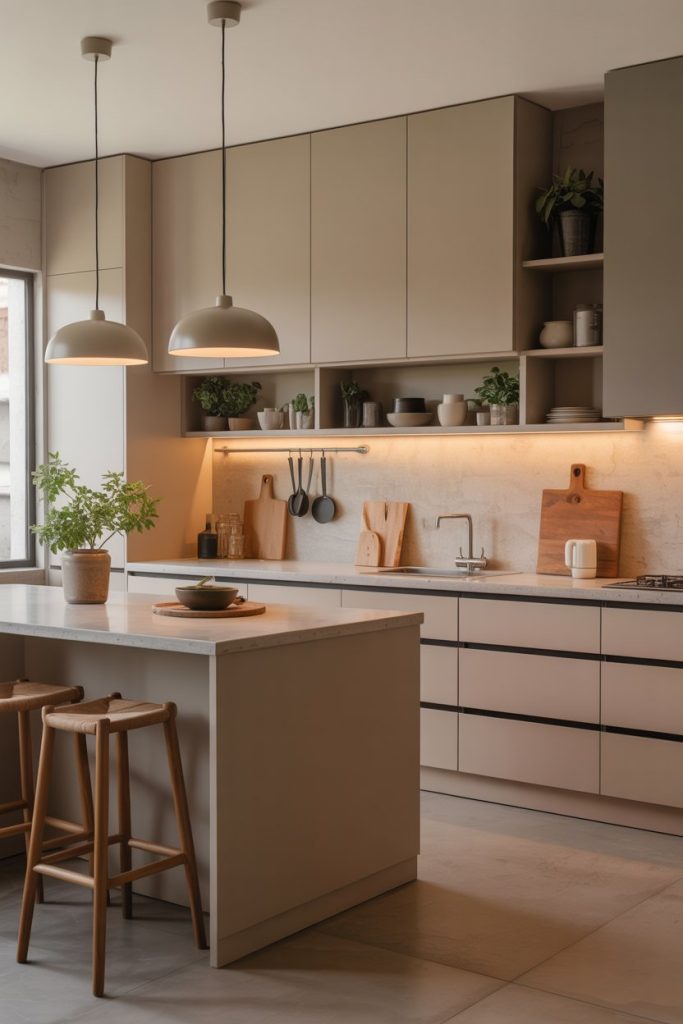
Japandi design values sustainability—buying less but better. This means investing in high-quality, timeless materials and avoiding fast furniture trends. Reclaimed wood, durable natural stone, and long-lasting hardware reduce waste and promote mindful consumption.
For an eco-friendly approach across your home, explore these cheap DIY home decor ideas that emphasize creativity and sustainability.
Tips:
- Choose FSC-certified wood products.
- Shop locally or second-hand for furniture.
- Invest in energy-efficient appliances.
Bonus: How to Personalize Your Japandi Kitchen
While Japandi design offers clear guidelines, it’s essential to make the space your own. Consider incorporating cultural heirlooms, favorite cookbooks, or personal art in a restrained way to give your kitchen soul while maintaining its calming vibe.
For ideas on making your entire home more personal and welcoming, check out these home entrance decor ideas—because first impressions matter.
Final Thoughts on Japandi Style Kitchen Design Ideas
Japandi kitchens are more than a passing trend. They represent a philosophy of mindful living—an antidote to cluttered, busy spaces that overwhelm rather than soothe. By adopting these Japandi style kitchen design ideas, you’ll create a space that’s not just beautiful but intentional, sustainable, and deeply calming.
For more inspiration on transforming your kitchen, don’t miss these interior design kitchen ideas or dive into the beauty of white kitchen ideas for a timeless approach.
Frequently Asked Questions
What is Japandi style?
Japandi is a hybrid interior design style blending Japanese minimalism with Scandinavian functionality. It emphasizes simplicity, natural materials, and cozy, calming environments.
How can I make my kitchen Japandi style?
Focus on minimal, functional layouts, use natural materials, choose muted color palettes, and reduce clutter. Add subtle, meaningful decor and invest in quality, sustainable materials.
Is Japandi style suitable for small kitchens?
Absolutely! Its emphasis on minimalism, smart storage, and functional design makes it perfect for small spaces. For more small-space ideas, see these how to maximize small spaces tips.
I hope you find this post helpful for planning your Japandi kitchen transformation! If you’d like, I can also help write variations or sections from this post. Let me know!






